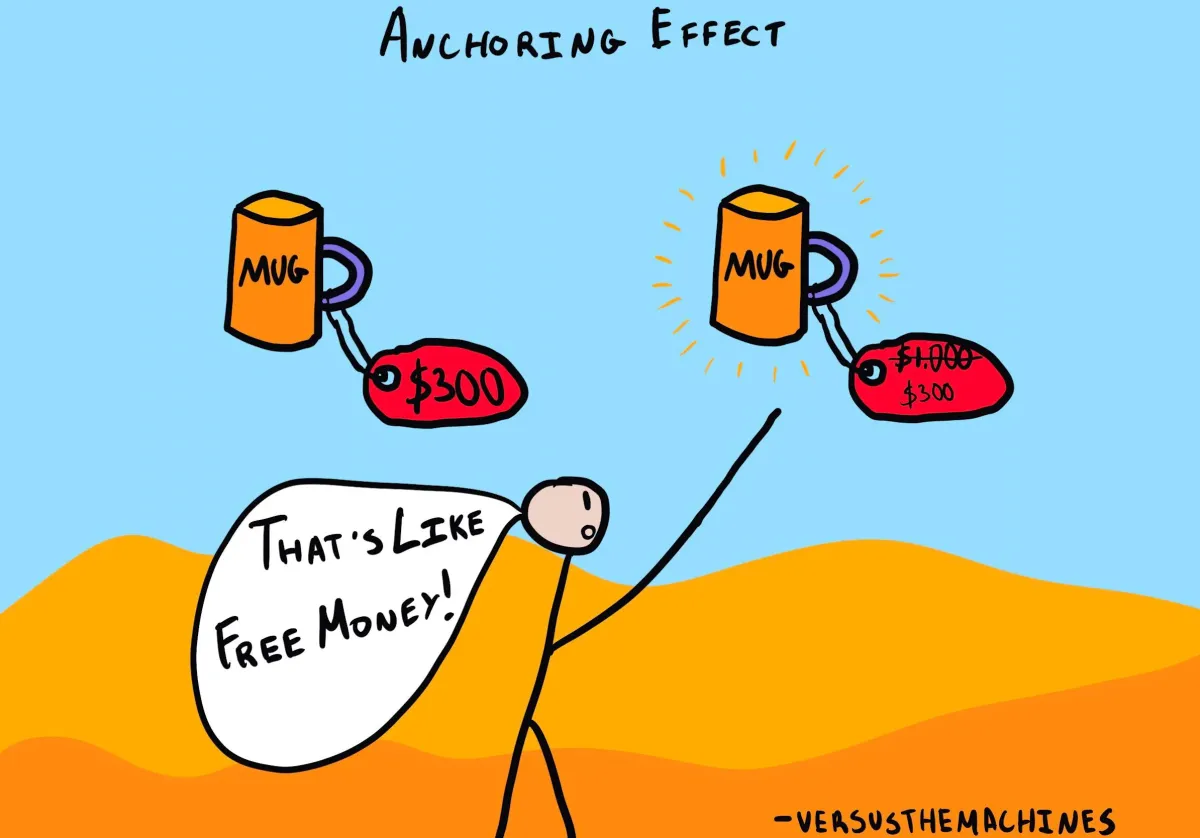Anchoring Bias: How it Influences Perception and Judgment
Anchoring bias is a cognitive bias that affects the way individuals make judgments or decisions by relying heavily on the first piece of information they encounter. It is a mental shortcut that can lead to inaccurate or biased conclusions.

Introduction
Anchoring bias is a cognitive bias that affects the way individuals make judgments or decisions by relying heavily on the first piece of information they encounter. It is a mental shortcut that can lead to inaccurate or biased conclusions. In this article, we will explore the concept of anchoring bias, its underlying mechanisms and its impact on perception and judgment.
Understanding Anchoring Bias
Anchoring bias occurs when individuals rely too heavily on an initial piece of information, known as the anchor, when making subsequent judgments or decisions. This anchor can be a number, a value, or any other piece of information that sets a reference point for further evaluation.
Mechanisms of Anchoring Bias
The mechanisms behind anchoring bias can be attributed to various cognitive processes. One explanation is the limited processing capacity of the human brain. When faced with complex decisions, individuals tend to rely on heuristics, or mental shortcuts, to simplify the decision-making process. Anchoring bias is one such heuristic that helps individuals make quick judgments.
Another mechanism is the cognitive priming effect. The initial anchor can prime individuals' minds, influencing their subsequent thoughts and perceptions. This priming effect can shape the way individuals interpret and evaluate subsequent information.
Examples of Anchoring Bias
To illustrate anchoring bias, let's consider a few examples:
Pricing: A retailer sets a high initial price for a product, creating an anchor. Even if the actual value of the product is lower, customers may still perceive it as a good deal due to the influence of the anchor.
Negotiations: During a negotiation, the first offer made often serves as an anchor for subsequent counteroffers. The initial offer can significantly influence the final outcome of the negotiation.
Surveys: The order in which questions are presented in a survey can create an anchoring effect. For example, if a survey asks individuals to estimate the percentage of GDP spent on healthcare before asking about their preferred level of healthcare spending, the initial anchor can influence their responses.
Effects of Anchoring Bias
Anchoring bias can have significant effects on perception and judgment:
Biased evaluations: Anchors can bias individuals' evaluations and judgments, leading to inaccurate assessments. For example, if individuals are given a high anchor, subsequent values may be perceived as lower than they actually are.
Limited adjustments: Individuals tend to make insufficient adjustments from the initial anchor, resulting in biased decisions. This can lead to missed opportunities or poor judgments.
Overconfidence: Anchoring bias can contribute to overconfidence in decision-making. Individuals may believe their judgments are accurate, even though they are influenced by a biased anchor.
Mitigating Anchoring Bias
Awareness is the first step in mitigating anchoring bias. By recognising the presence of anchoring bias, individuals can consciously challenge their initial judgments and seek additional information to make more informed decisions.
Other strategies to mitigate anchoring bias include:
Multiple anchors: Consider multiple anchors or reference points to avoid solely relying on one piece of information.
Delayed evaluation: Delay the evaluation process to allow for more thoughtful and unbiased judgments. This reduces the influence of the initial anchor.
Consider alternatives: Actively seek out alternative perspectives or information to counterbalance the influence of the initial anchor.
Conclusion
Anchoring bias is a cognitive bias that affects perception and judgment by relying heavily on the first piece of information encountered. By understanding the mechanisms behind anchoring bias and its potential effects, individuals can make more informed decisions and avoid the pitfalls of biased judgment. Awareness, multiple anchors, delayed evaluation and considering alternatives are strategies that can help mitigate the impact of anchoring bias and promote more accurate and unbiased decision-making.



